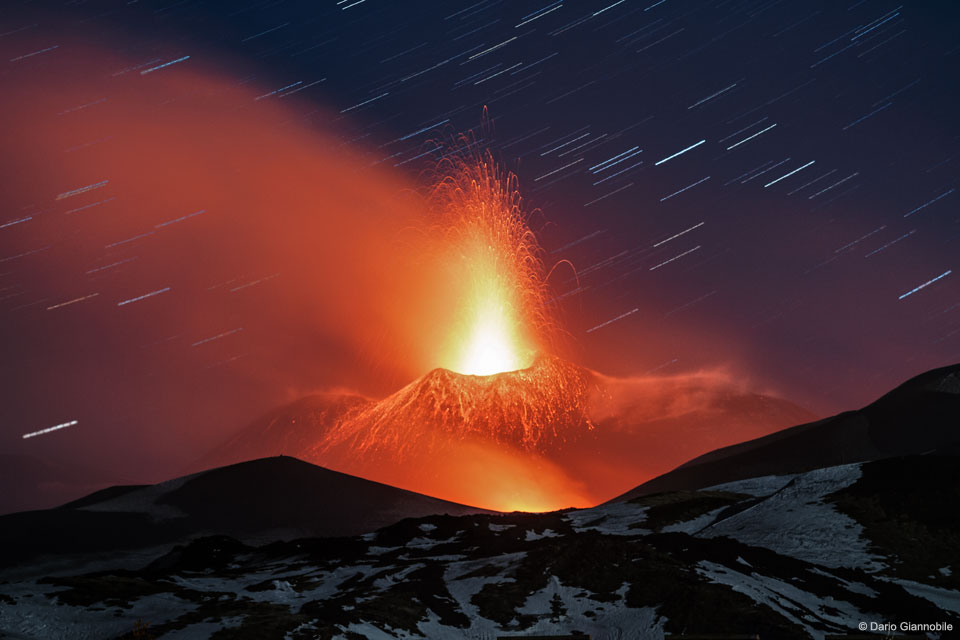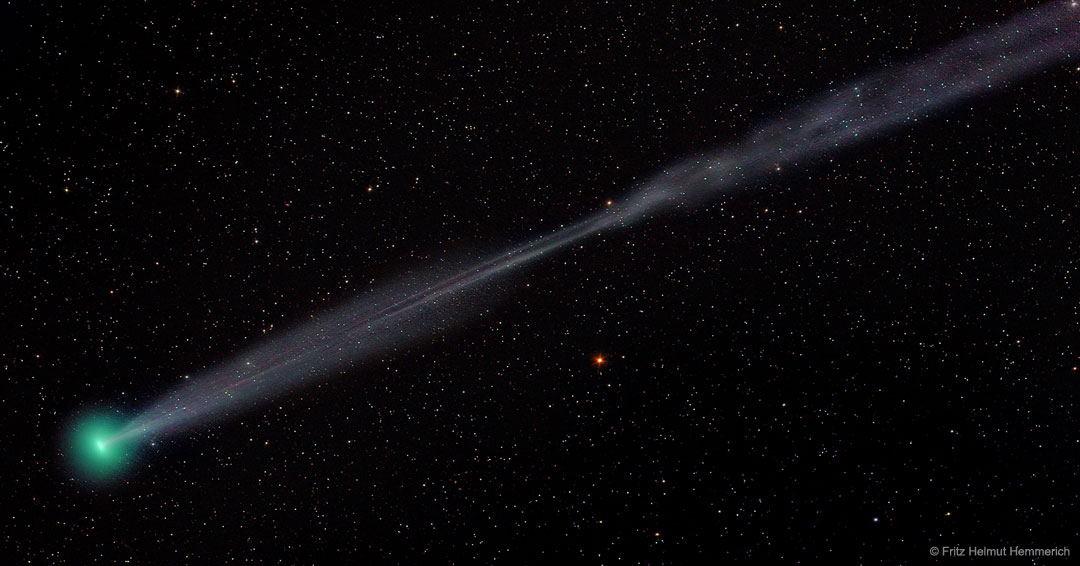Khongoryn Els en Mongolia.
26.4.17
Astronomy picture of the day - 2017 April 26 - Mt. Etna Lava Plume

Image Credit & Copyright: Dario Giannobile
Explanation: Mt. Etna has been erupting for hundreds of thousands of years. Located in Sicily, Italy, the volcano produces lava fountains over one kilometer high. Mt. Etna is not only one of the most active volcanoes on Earth, it is one of the largest, measuring over 50 kilometers at its base and rising nearly 3 kilometers high. Pictured in mid-March, a spectacular lava plume erupts upwards, dangerous molten volcanic bombs fly off to the sides, while hot lava flows down the volcano's exterior. The Earth's rotation is discernable on this carefully time, moon-lit, long duration image as star trails.
Astronomy picyure of the day - 2017 April 25 - A Split Ion Tail for Comet Lovejoy E4

Image Credit & Copyright: Fritz Helmut Hemmerich
Explanation: What's happened to Comet Lovejoy? In the pictured image, a processed composite, the comet was captured early this month after brightening unexpectedly and sporting a long and intricate ion tail. Remarkably, thetypically complex effect of the Sun's wind and magnetic field here caused the middle of Comet Lovejoy's ion tail to resemble the head of a needle. Comet C/2017 E4 (Lovejoy) was discovered only last month by noted cometdiscoverer Terry Lovejoy. The comet reached visual magnitude 7 earlier this month, making it a good target for binoculars and long duration exposure cameras. What's happened to Comet Lovejoy (E4) since this image was taken might be considered even more remarkable -- the comet's nucleus appeared to be disintegrating and fading as it neared its closest approach to the Sun two days ago.
Inscription à :
Articles (Atom)
ENDROITS ETRANGES ET TERRIFIANTS - La forêt Aokigahara, une forêt « suicide » au Japon
Aokigahara est une forêt au pied du mont Fuji où des centaines de personnes sont allées se suicider chaque années depuis les années 1950. Le...

